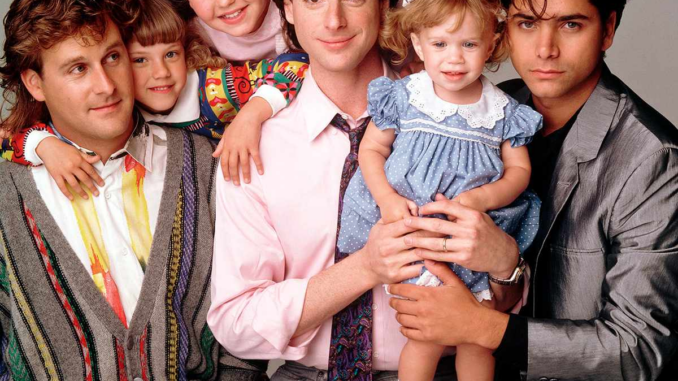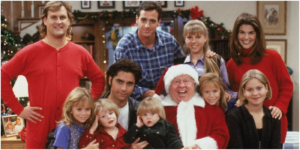
When Full House first aired in 1987, it quickly became a staple of family sitcoms. Nearly three decades later, the show is still beloved by millions, proving that its appeal is far from over. But what is it about Full House that keeps audiences coming back, even years after the original series concluded? Why is it still one of the most watched family shows today?
In this article, we will dive into the enduring charm of Full House and why it continues to capture the hearts of new generations. From its relatable characters to its heartwarming messages about family, Full House has managed to stay relevant even in the modern age.
A Timeless Appeal: Why Full House Still Resonates
One of the reasons Full House remains so popular today is its universal themes. The show touched on issues that families still face, making it relatable even for audiences who weren’t alive when it first aired.
The Power of Family
At its core, Full House is about the importance of family. The show focuses on a widowed father, Danny Tanner, who is raising his three daughters with the help of his quirky brother-in-law and best friend. The show’s central message— that family comes first— resonates deeply with viewers of all ages. Whether you’re a parent, a child, or someone who simply values close relationships, Full House emphasizes the unconditional love that ties family members together.
Relatable Family Dynamics
The relationships in Full House are grounded in reality. While the show may have had its share of exaggerated moments, it dealt with real-life issues, such as sibling rivalry, the challenges of single parenthood, and the importance of supporting one another through difficult times. These are issues that still hold weight today, making Full House incredibly relatable to a modern audience.
A Cast That Feels Like Family
Another major reason Full House continues to be so beloved is the chemistry among the cast. The characters felt like a real family, and the actors’ genuine relationships on and off-screen made them even more endearing.
The Heart of the Show: Bob Saget as Danny Tanner
Bob Saget’s portrayal of Danny Tanner was central to the show’s success. As a widowed father trying to raise three girls, Saget brought warmth, humor, and a sense of vulnerability to the role. His on-screen relationship with his daughters and the other characters was filled with love and care, making him a TV dad audiences could relate to and look up to.
John Stamos and Dave Coulier: Jesse and Joey’s Lasting Impact
John Stamos (Jesse Katsopolis) and Dave Coulier (Joey Gladstone) brought their own unique flair to the show. Jesse’s cool, rebellious attitude and Joey’s goofy humor balanced out Danny’s more serious nature. Together, the trio created a lovable and supportive family unit, demonstrating that family isn’t just about blood—it’s about the people you choose to surround yourself with.
Even after the show’s end, the bond among the cast members remained strong. Many of the actors have continued to work together on reunions and spin-offs, like Fuller House, which helped keep the Full House legacy alive for new generations.

Generational Appeal: Why Full House Continues to Attract New Audiences
One of the reasons Full House remains so popular is its ability to appeal to multiple generations. Although the show first aired more than 30 years ago, its timeless messages and universal themes continue to resonate with viewers of all ages.
Full House and Fuller House: Connecting the Past and Present
The success of Fuller House, the Netflix reboot of Full House, is a testament to the show’s lasting appeal. The new series introduced the beloved characters to a new generation of viewers while also bringing back the original stars. By combining the nostalgia of the original show with fresh storylines, Fuller House struck a perfect balance between honoring the past and appealing to modern audiences.
While Fuller House had a different tone, it still stayed true to the heart of Full House, showing how important it is to nurture relationships with the people you love. The reboot successfully continued the story of the Tanner family, and viewers who grew up with Full House were excited to see their favorite characters all grown up.
Streamability and Accessibility
With the rise of streaming platforms like Netflix, Full House has remained more accessible than ever. Fans who watched the show during its original run can now introduce it to their children, while younger viewers can experience the magic of the show for the first time. The ability to binge-watch all eight seasons at once has made Full House a show that continues to be discovered and rediscovered by new generations.
The Role of Full House in Shaping Family Entertainment
Full House played a significant role in shaping the landscape of family television. During its run, it helped redefine the family sitcom genre, and many shows that followed drew inspiration from its combination of humor, heart, and relatable family dynamics.
A Template for Family Sitcoms
The success of Full House helped pave the way for other family-focused sitcoms, like The Fresh Prince of Bel-Air, Step by Step, and Family Matters. These shows, while distinct in their own right, shared the same values of love, support, and humor that made Full House so successful.
The show’s success also highlighted the importance of family-centered entertainment, which continues to be a dominant force in television today. Full House showed that audiences crave heartwarming stories that can make them laugh, cry, and feel connected to the characters on screen.
Nostalgia: The Driving Force Behind Full House’s Enduring Popularity
For many, Full House represents a simpler, more innocent time. The nostalgia factor plays a huge role in why the show remains popular even after all these years. For those who grew up watching it, Full House is a cherished part of their childhood.
Why Nostalgia Keeps Full House Relevant
Nostalgia is a powerful tool in entertainment, and Full House benefits from its status as a show that is synonymous with family values and simpler times. Fans who watched Full House in the ’80s and ’90s often turn to the show for comfort and a reminder of their childhood. In a world that is constantly changing, Full House offers a sense of familiarity and warmth that is hard to find elsewhere.
Additionally, the lovable characters and their enduring relationships with one another offer a sense of escapism that makes viewers feel good, even years after the show’s end.
Conclusion: Why Full House Will Always Be a Family Favorite
Even 30-plus years after its debut, Full House remains a cherished family show that appeals to audiences of all ages. The show’s universal themes of love, friendship, and family continue to resonate today, and the chemistry between the cast members ensures that the show remains a fan favorite.
With its combination of heartwarming moments, humor, and relatable family dynamics, Full House remains a timeless classic that will always have a place in the hearts of fans—whether they’re discovering it for the first time or revisiting it with fond memories.
FAQs
1. Is Full House still relevant to today’s viewers? Yes! The show’s themes of love, family, and friendship are timeless and continue to resonate with modern audiences.
2. Why did Full House become so popular? Full House became popular because of its relatable characters, heartwarming storylines, and the universal appeal of its themes around family and love.
3. Is Full House still available to watch? Yes, Full House is available for streaming on platforms like Netflix, making it easy for both old and new fans to enjoy the show.
4. How did Fuller House continue the legacy of Full House? Fuller House brought back the original cast and introduced new storylines with the next generation of Tanner kids. It successfully blended nostalgia with fresh content for both old fans and new viewers.
5. What makes Full House different from other sitcoms? Full House stood out because it combined humor with heart. It dealt with real-life family challenges while maintaining a lighthearted tone, making it a standout in the family sitcom genre.
